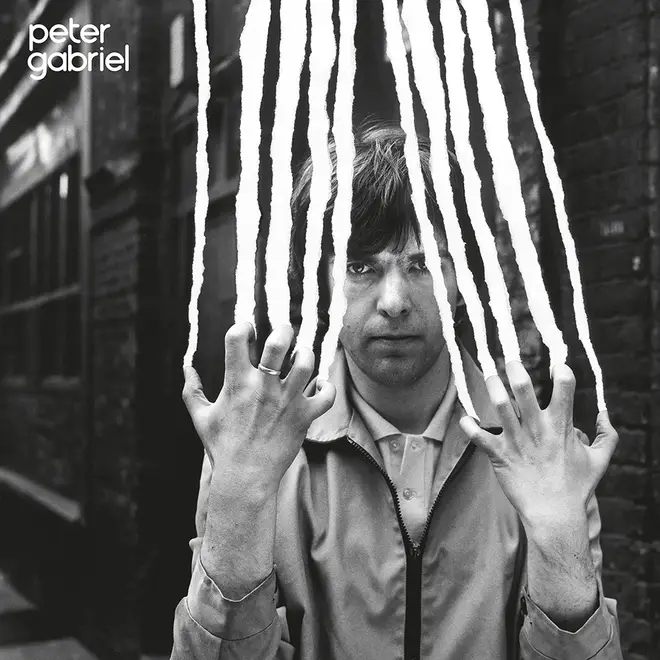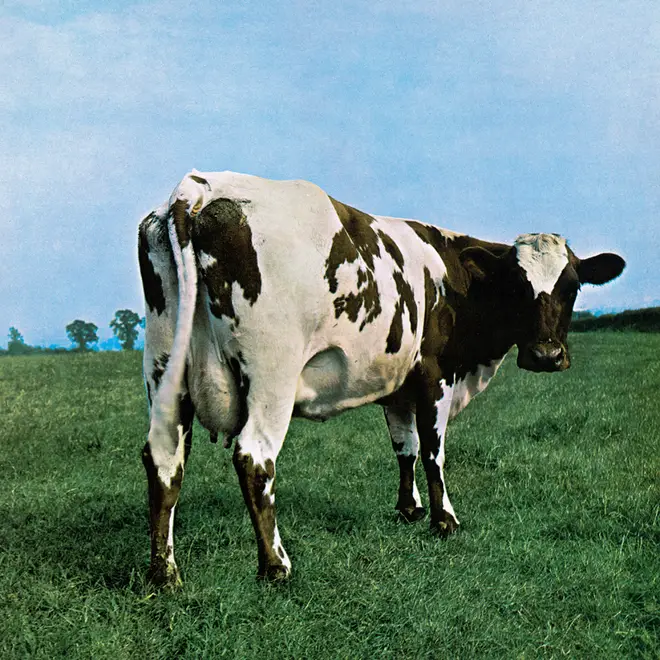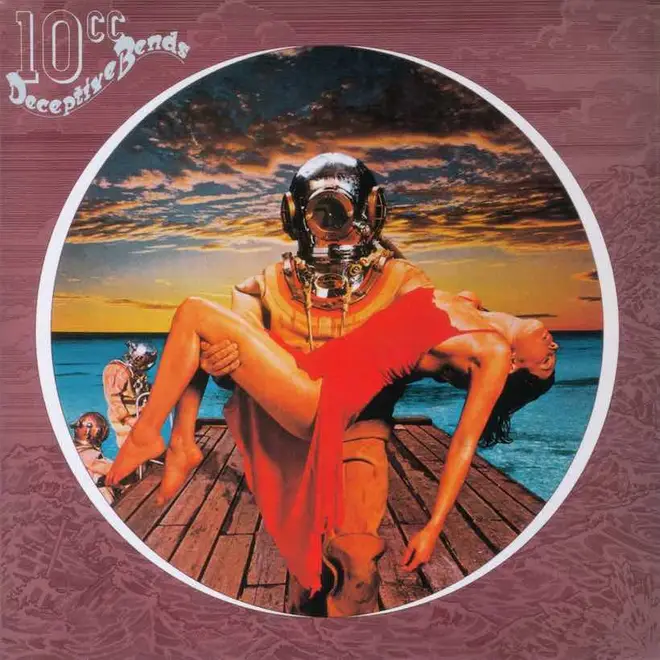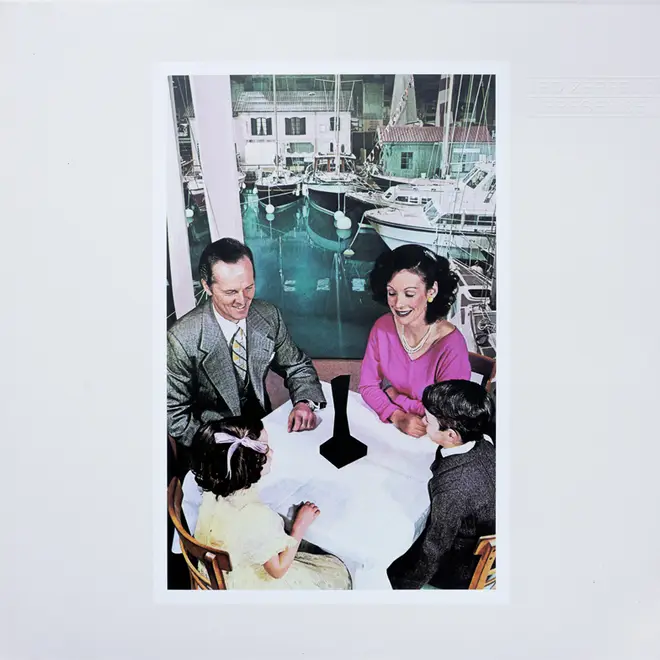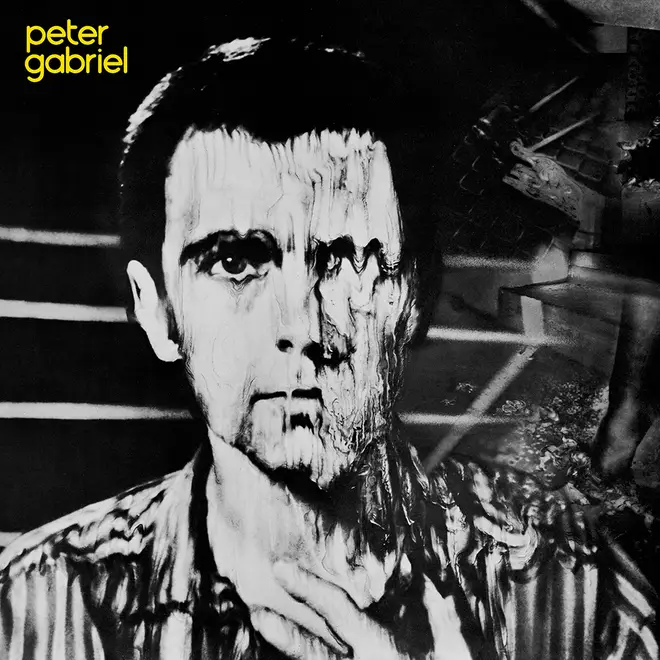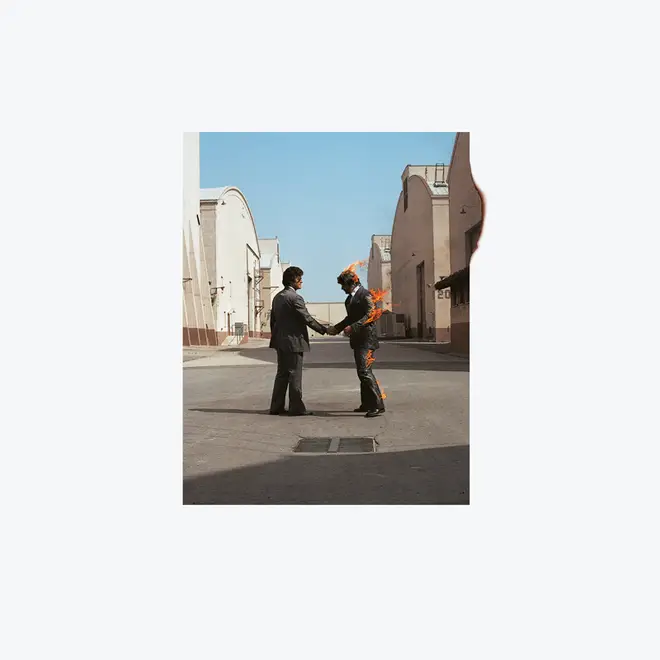Anton Corbijn on the "incredible story" of album sleeve designers Hipgnosis
14 July 2023, 12:05 | Updated: 14 July 2023, 13:57

Director Anton Corbijn on his favourite Hipgnosis album cover
The acclaimed director is behind a new documentary on the design duo of Storm Thorgerson and Aubrey Powell who created iconic sleeves for Pink Floyd, Led Zeppelin and more. He talks to Radio X about the team's work and enduring influence.
Listen to this article
If you don't know the name of design team Hipgnosis, then you'll certainly know their work. The prism with a beam of light on Pink Floyd's Dark Side Of The Moon... the inflatable pig flying over Battersea Power Station... the mystical landscape of Led Zeppelin's Houses Of The Holy... and the eerie melting face of Peter Gabriel's third solo album.
Hipgnosis were the core team of photographer Aubrey "Po" Powell and the late graphic designer Storm Thorgerson, who got together in Cambridge in 1968 after a request from some friends to come up with a sleeve for an album they'd just recorded.
The friends were Pink Floyd and the album was their second, A Saucerful Of Secrets. The resulting collage may not have impressed the record company, but it was the beginning of a long and fruitful career for Hipgnosis that saw the team redefine what album cover artwork could be.

Now Hipgnosis are the subject of a new film, Squaring The Circle, which tells the story of Powell and Thorgerson's humble beginnings to lavish rock star excess, spending thousands on creating some of the most iconic album designs of all time.
The film is the first documentary from acclaimed photographer Anton Corbijn - a man who's created a few iconic covers himself, including U2's The Joshua Tree and Violator for Depeche Mode. His previous full-length film was the Joy Division biopic Control and the new documentary carries his signature black-and-white photography.
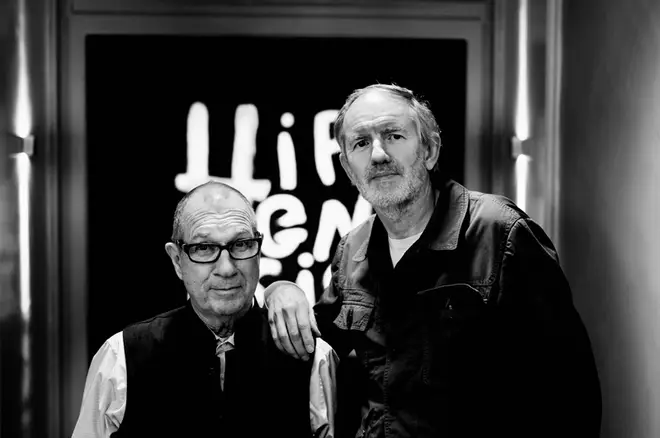
"Po, who's the sole surviving member of Hipgnosis, came to Amsterdam to ask me to do this documentary," Corbijn told Radio X. "He's quite a persuasive character, so I said yes.
"He had so many stories and I knew the sleeves - I had a lot of them in my home. I got him to carry the story in the film; he's the red ribbon through it all."
The documentary features memories and anecdotes from Paul McCartney, Peter Gabriel, Graham Gouldman of 10cc, Led Zeppelin’s Robert Plant and Jimmy Page and the three surviving members of Pink Floyd: Roger Waters, David Gilmour and Nick Mason. "All the people that they worked with that I wanted to talk to agreed to do it," Corbijn notes. "There was a real love for Hipgnosis from the musicians."
Hipgnosis gave Pink Floyd a visual identity: the film tells the story of how the development of the memorable "prism" design for Dark Side Of The Moon summarised the themes of one of the biggest selling records of all time. For a group like Led Zeppelin, whose live shows were legendary and made them internationally famous, Hipgnosis added an element of mystery with the multiple sleeves idea of In Through The Out Door and the weird 2001-style black monolith that appears on the cover of Presence. What does it all mean?
As Noel Gallagher says in the film: "What I love about vinyl is the artwork. It's the poor man's art collection."

Squaring The Circle (The Story of Hipgnosis) - Official UK Trailer
In the era before Photoshop, all Hipgnosis could do to create unreal and surrealistic designs was to retouch photographs, physically combine images together either using collages or darkroom trickery and create the rest for real.
The man on the cover of Floyd's Wish You Were Here really is on fire. That pig really did fly over Battersea Power Station (just about, see below for the details). But the story isn't just about inflatable pigs and stuntmen in flames. It's about the complex and often antagonistic relationship between Powell and Thorgersen - art versus commerce, common sense versus ambition.
An enormous amount of money was spent on the sleeve for Wings' Greatest, a 1978 compilation that features a photo of an art deco statue belonging to Paul McCartney perched atop of a mountain in the Swiss Alps. In the film Powell notes ruefully that they could have created the final shot in the studio with a blue backdrop and a pile of salt, but where's the fun in that?
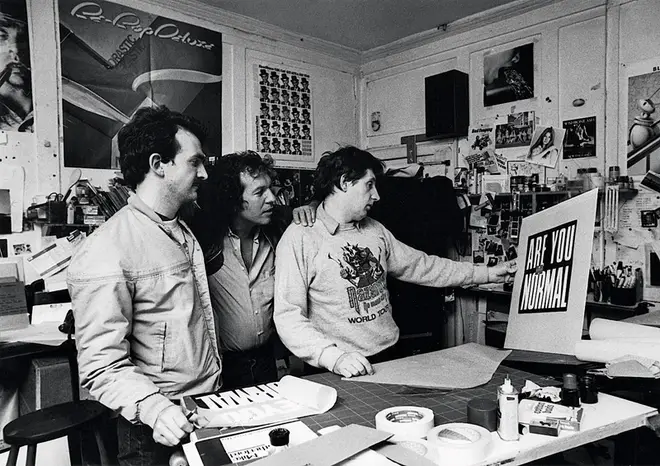
Ultimately, with the downturn in record sales at the turn of the decade, rampant inflation in the UK and belts being tightened, nobody could afford the lavish designs of Hipgnosis and Po and Thorgeson went their separate ways in 1983.
Thorgerson continued to create designs for the likes of Muse, The Cranberries and The Mars Volta until his death in 2013; Powell moved into filmmaking, working with Paul McCartney, Yes and The Who.
The documentary is an affectionate, but realistic look at the golden age of record sleeve design, but Corbijn isn't sure whether he'll follow it up with a similar subject.
"I'm not sure documentary-making is my forte. I enjoyed this one, but I'm very careful not to just make documentaries about music. My first film (Control) was music-related, and I got offered every music biography of every deceased musician after that. I thought, if I ever make more films, I'm not going to go down that route."
Squaring The Circle is released in selected cinemas and on demand streaming services on 14th July. See the film's official site here for full details. A special edition blu-ray will be available from 7th August.
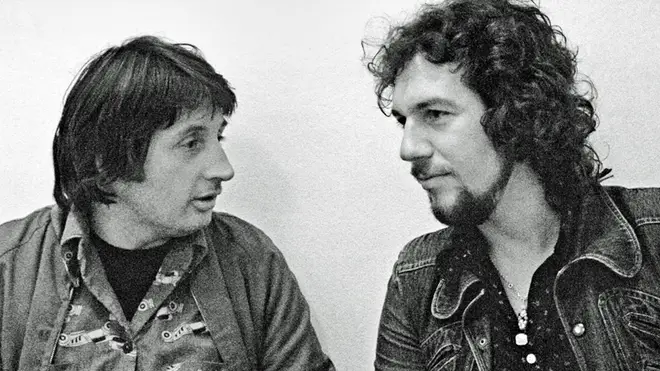
The Top 10 Hipgnosis album cover designs
-
Pink Floyd - Dark Side Of The Moon
The most famous Hipgnosis sleeve design: for Pink Floyd's Dark Side Of The Moon (1973). Picture: Hipgnosis/Press The all time classic Hipgnosis design, for the all-time classic Pink Floyd album, released in March 1973. Thorgerson was inspired by a picture in an old physics school book and the band realised the white light refracted through a prism summed up the existential nature of the album perfectly.
-
Peter Gabriel - Peter Gabriel 2
The cover of Peter Gabriel's second album aka "Scratch" aka "The One With The Scratching Finernails". Picture: Press The arrival of Peter "Sleazy" Christopherson in the Hipgnosis team in the mid-70s saw the company's designs take a darker turn - thanks mainly to Sleazy's other job as a member of controversial industrial band Throbbing Gristle. Gabriel's first four solo albums - released after he left Genesis in 1975 - were all untiled, meaning the Hipgnosis artwork was a useful way of differentiating them, hence the informal titles Car, Scratch, Melt and Security.
-
Pink Floyd - Animals
The memorable photo from Pink Floyd's Animals (1977). Picture: Hipgnosis The sleeve for Floyd's 1977 album was an idea from the band's Roger Waters, but it was down to Hipgnosis to execute the plan, complete with a genuine inflatable pig sailing over Battersea Power Station in London. On the first day, the pig refused to fly and on the second the balloon slipped free and ended up in a field in Kent. The final result is a combination of the landscape from the early shots, with an image of the pig superimposed.
-
Led Zeppelin - Houses Of The Holy
The gatefold cover of Led Zeppelin's Houses Of The Holy (1973) featuring a collage of children Stefan and Samantha Gates, clambering up the Giant's Causeway in Northern Ireland. Picture: Hipgnosis An epic, mythical sleeve design for the band's fifth studio album, but when the shoot at the Giant's Causeway in Northern Ireland didn't quite come off, Hipgnosis saved the day by combining different shots of children Stefan and Samantha Gates in different poses into one surreal montage.
-
Pink Floyd - Atom Heart Mother
The cover of Pink Floyd's Atom Heart Mother (1970). Picture: Hipgnosis Lulabelle III stars on the cover of Pink Floyd's ambitious fifth album She was the first cow Hipgnosis man Storm Thorgerson came across when he drove out into the nearby countryside. The record company were horrified, but this is a personal favourite of the documentary maker Anton Corbijn.
He told Radio X: "My favourite Hipgnosis sleeve is a 'no design sleeve' - it's the cow from Atom Heart Mother. I loved it at the time and I still do. It's wonderful. I also like the music - which is always a very important element of how you remember a sleeve. If you love the music, the sleeve is probably a bit more endearing. I always veered towards the more straightforward-looking photographs."
-
10cc - Deceptive Bends
10cc's Deceptive Bends album. Picture: Press One of Britain's most underrated art-rock bands, 10cc's Graham Gouldman came up with the title of their 1977 album after seeing a road sign warning of "deceptive bends" outside their studio in Dorking, Surrey. Hipgnosis interpreted this as the bends deep sea divers get when surfacing, creating a memorable hyper-real image in the studio.
-
Pink Floyd - Ummagumma
Pink Floyd's Ummagumma album cover (1969). Picture: Hipgnosis If you look up "droste effect" on Wikipedia, it'll mention the sleeve to 1969's Ummagumma. The image of the group is repeated on a picture on the wall, with each member in a different position - and on into infinity, presumably. It's a typically imaginative but simple idea from Powell and Thorgerson.
-
Led Zeppelin - Presence
Led Zeppelin's Presence album from 1976. Picture: Hipgnosis/Atlantic Records The enigmatic sleeve from Zeppelin's seventh album features the mysterious Zeppelin "obelisk" (inspired by 2001) and a shot of the marina at Earl's Court boat show in the background.
-
Peter Gabriel - Peter Gabriel III
Peter Gabriel III (1980) aka "Melt" aka "The Melty Face One". Picture: Press Another unsettling image for a Gabriel solo album, this one featuring the hit Games Without Frontiers. The photo was taken with a Polaroid instant camera, with the picture distorted and defaced by hand before the print had time to "set".
-
Pink Floyd - Wish You Were Here
Pink Floyd's Wish You Were Here album (1975). Picture: Hipgnosis Stuntman Ronnie Rondell bursts into flames on the Warner Bros backlot in Hollywood, as taken by Aubrey Powell for Pink Floyd's Wish You Were Here (1975). Po recalls in the new documentary Squaring The Circle that the Hipgnosis team pushed the stuntman as far as he could go with the dangerous stunt - when the flames completely engulfed his head, the actor stopped the session immediately, but Powell had his shot. Ironically, despite the risk, the original vinyl album sleeve was wrapped in black plastic, so you had to break the covering to actually see this image.




